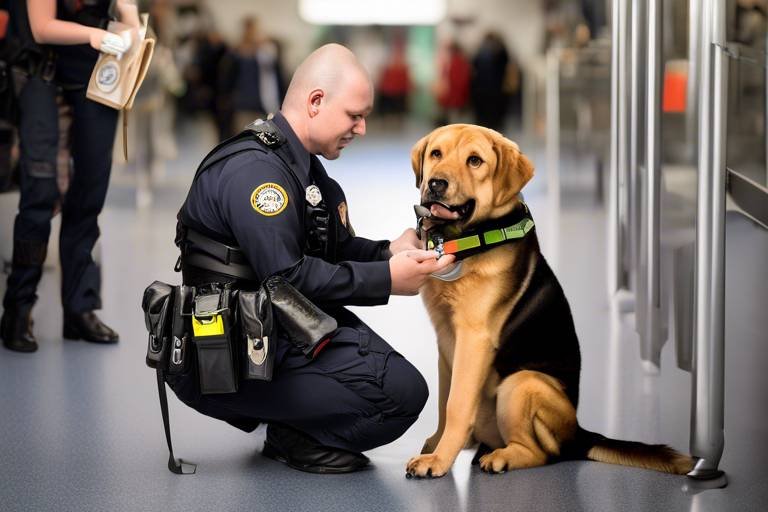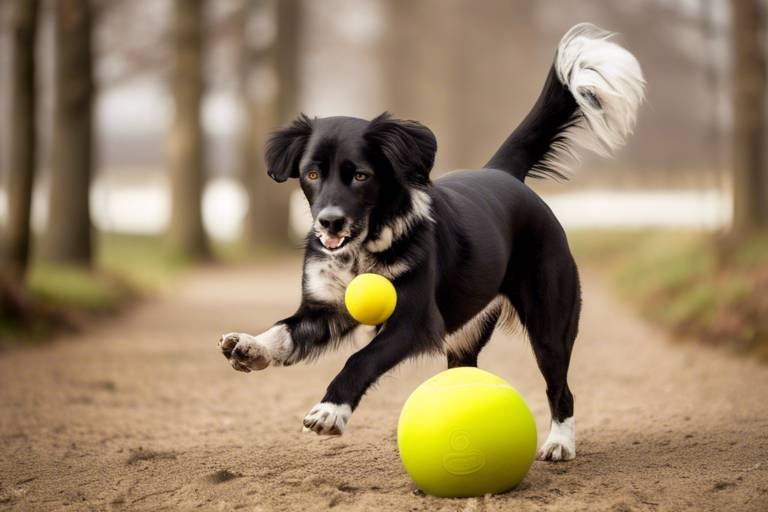How to Train Your Dog to Perform Agility
Training your dog to perform agility is not just about teaching them to navigate through a series of obstacles; it's about creating a fun, engaging, and rewarding experience for both you and your furry companion. Imagine your dog leaping over jumps, weaving through poles, and darting through tunnels with the grace of a gazelle—all while you cheer them on! This article will explore effective methods and techniques to train your dog for agility courses, enhancing their physical fitness and mental stimulation while strengthening the bond between you and your furry friend.
Agility training involves teaching dogs to navigate obstacle courses that test their speed, coordination, and obedience. It’s not just a sport; it’s a fantastic way to engage your dog's mind and body. The benefits of agility training are vast:
- Physical Fitness: It helps keep your dog fit and healthy.
- Mental Stimulation: Navigating obstacles challenges your dog mentally.
- Improved Behavior: Agility training can correct behavioral issues by focusing their energy.
- Strengthened Bond: Working together fosters a deeper connection between you and your pet.
Through agility training, you’ll not only witness your dog’s physical transformation but also see their confidence soar as they master new skills!
Selecting appropriate agility equipment is crucial for effective training. The right gear will make the training process smoother and more enjoyable for both you and your dog. Here are some common types of agility equipment:
| Equipment Type | Purpose |
|---|---|
| Jumps | Improve your dog’s jumping ability and coordination. |
| Tunnels | Enhance your dog’s confidence and speed. |
| Weave Poles | Develop agility and precision in navigation. |
When choosing equipment, consider your dog's size and skill level. For smaller breeds, lower jumps and shorter tunnels are ideal, while larger dogs may require sturdier equipment that can withstand their strength and energy.
Before diving into agility training, it’s essential that your dog masters some basic commands. These commands are the building blocks for more advanced agility skills. Key commands include:
- Sit: A fundamental command that establishes control.
- Stay: Helps your dog remain in one place while you set up obstacles.
- Come: Ensures your dog returns to you quickly and safely.
Having these commands down pat will make your agility training sessions much more efficient and enjoyable!
Confidence is key for successful agility training. A nervous dog may struggle with obstacles, while a confident dog will approach them with enthusiasm. To build your dog’s confidence, consider the following techniques:
- Positive Reinforcement: Reward your dog with treats and praise for every small success.
- Gradual Exposure: Introduce obstacles slowly, allowing your dog to get used to them without feeling overwhelmed.
- Supportive Environment: Create a fun and encouraging atmosphere where mistakes are okay.
Remember, patience is crucial. Your dog will thrive when they feel secure and appreciated!
Gradual introduction to obstacles is vital for preventing fear and anxiety. Start with simple obstacles that your dog can easily navigate. As they become more comfortable, gradually increase the complexity. For example, you might begin with a simple jump before moving on to a series of jumps or a tunnel. Always observe your dog’s body language and adjust the training pace accordingly. If they seem hesitant, take a step back and allow them to acclimate.
Consistent practice is essential for developing agility skills. Set aside regular training sessions, aiming for at least a few times a week. Each session should be fun and engaging, with a mix of practice and play. Setting realistic goals and tracking progress can help keep your dog motivated. Celebrate their achievements, no matter how small—each step forward is a victory!
Training can come with its challenges. Common obstacles dog owners face during agility training include:
- Lack of Focus: Dogs can get easily distracted. Use high-value treats to keep their attention.
- Fear of Obstacles: If your dog is scared, take a step back and build their confidence gradually.
- Inconsistent Training: Consistency is key. Regular sessions will yield the best results.
Identifying these challenges early on and implementing solutions can lead to a smoother training experience.
Participating in an agility class or club can significantly enhance your training experience. Not only will you receive expert guidance, but your dog will also benefit from socialization opportunities with other dogs. Classes often provide a structured environment that can help both you and your dog learn more effectively. Plus, it’s a great way to meet other dog lovers and share tips and experiences!
Q: How old should my dog be to start agility training?
A: Most dogs can start agility training as early as 1 year old, but it’s essential to consider their physical development and health. Always consult your veterinarian before starting.
Q: Can all breeds participate in agility training?
A: Yes! Agility is suitable for many breeds, but training should be tailored to each dog's physical capabilities and temperament.
Q: What if my dog doesn’t seem interested in agility?
A: Not every dog will be enthusiastic about agility. It’s important to find what excites your dog and incorporate that into your training.
Q: How can I prevent injuries during training?
A: Always warm up your dog before training, use proper equipment, and avoid overexertion. Pay attention to your dog’s signals and take breaks as needed.
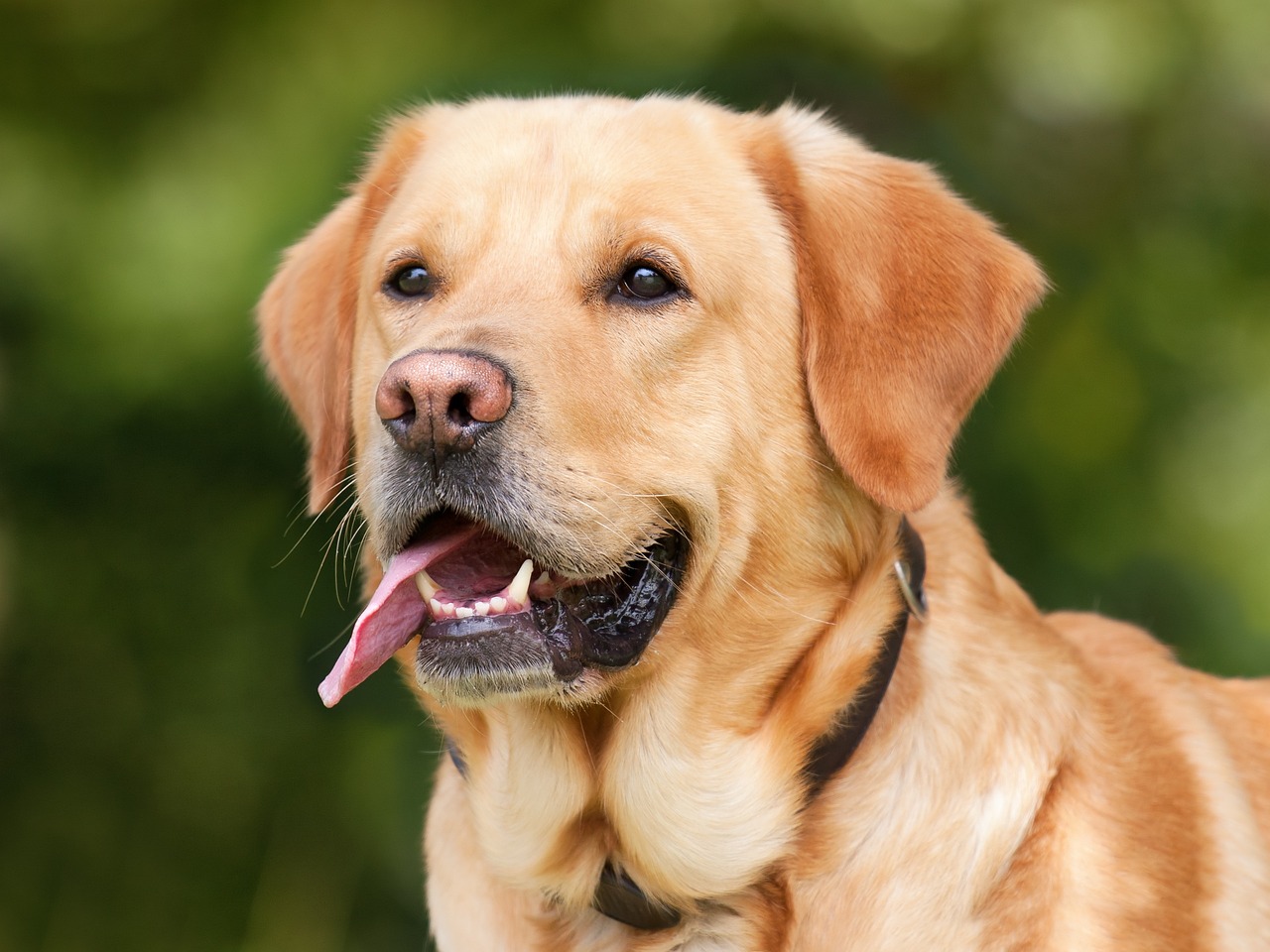
Understanding Agility Training
Agility training is not just a fun way to spend time with your dog; it's an exciting journey that enhances your furry friend's physical fitness and mental sharpness. Imagine your dog, gracefully weaving through poles, leaping over jumps, and darting through tunnels, all while showcasing their natural athleticism and intelligence. This kind of training involves teaching dogs to navigate through a series of obstacles, and it can be a game-changer for both you and your pet.
So, why should you consider agility training for your dog? Well, the benefits are numerous and can profoundly impact your dog's behavior and overall wellness:
- Physical Fitness: Just like us, dogs need regular exercise to stay healthy. Agility training provides a fantastic workout, helping to burn off excess energy and maintain a healthy weight.
- Mental Stimulation: Dogs thrive on challenges. Agility courses require them to think and make quick decisions, which keeps their minds sharp and engaged.
- Improved Behavior: Engaging in agility training can lead to better behavior at home. The focus and discipline required for agility can translate into improved obedience in everyday situations.
- Strengthened Bond: Training together fosters a deeper connection between you and your dog. It’s an opportunity to communicate, understand each other, and build trust.
Agility training is suitable for dogs of all breeds and ages, although it's essential to consider your dog's individual abilities and health conditions before diving in. Some dogs may take to the course like a duck to water, while others might need a little more encouragement. Regardless of your dog's starting point, agility training can be tailored to meet their needs and help them shine.
Moreover, agility training is not just about competition; it's about having fun! Many dog owners find joy in watching their pets learn new skills and tackle challenges. The thrill of seeing your dog successfully navigate an obstacle course is incredibly rewarding. It's like watching a child learn to ride a bike for the first time—there's that mix of pride and excitement that fills your heart.
In summary, agility training is a multifaceted activity that benefits both dog and owner. It promotes physical fitness, enhances mental stimulation, improves behavior, and strengthens the bond between you and your furry companion. So, if you’re looking to embark on a thrilling adventure that will keep both you and your dog engaged, agility training might just be the perfect fit!
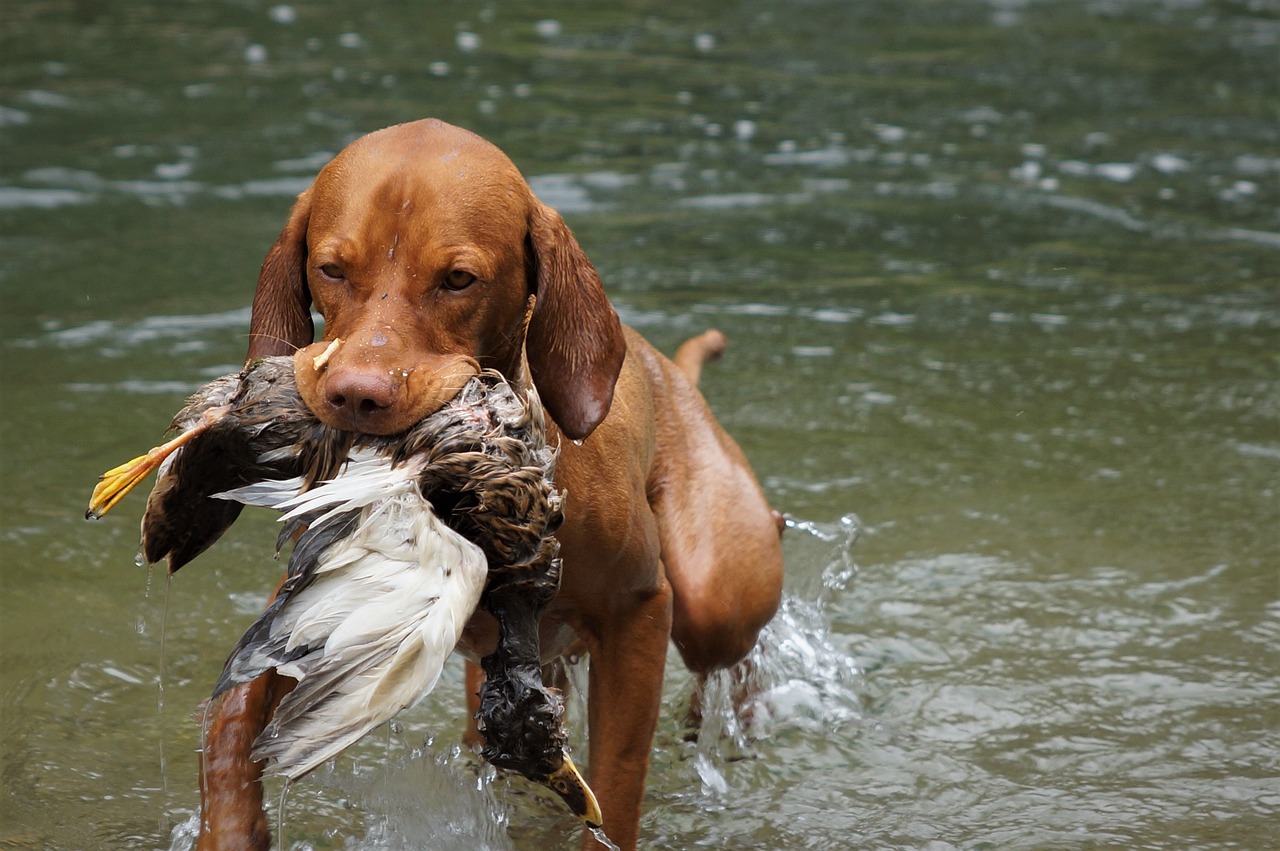
Choosing the Right Equipment
When it comes to agility training, selecting the right equipment is absolutely crucial for your dog's success and safety. Just like a chef needs the right tools to whip up a delicious meal, your furry friend requires specific gear to navigate those challenging courses. The right equipment not only enhances your dog's performance but also makes the training experience more enjoyable for both of you. So, what should you consider when choosing agility equipment?
First and foremost, you need to assess your dog's size and skill level. For instance, a small breed like a Chihuahua will need different jump heights compared to a larger breed like a Labrador Retriever. It’s essential to ensure that the equipment is appropriate for your dog's physical capabilities to prevent injuries and build confidence. A well-fitted piece of equipment can make all the difference, turning a daunting obstacle into a fun challenge.
Here are some common types of agility equipment you might want to consider:
- Jumps: These can be adjustable to accommodate different heights. Start low and gradually increase the height as your dog gains confidence.
- Tunnels: A great way to teach your dog to follow your commands and navigate through enclosed spaces.
- Weave Poles: These help improve your dog's agility and coordination, requiring them to zigzag through a series of poles.
- Teeter-Totter: This piece of equipment teaches balance and control, as your dog must navigate a pivoting plank.
When shopping for agility gear, always look for durable materials that can withstand the wear and tear of enthusiastic pups. It's also wise to choose equipment that is easy to set up and take down, especially if you plan to train in different locations. Portability can be a game-changer, allowing you to take your training sessions to the park or your backyard.
Another factor to consider is the safety of the equipment. Ensure that all pieces are well-constructed and free from sharp edges or hazards that could injure your dog. Additionally, check for stability; for example, jumps should have a solid base to prevent them from tipping over when your dog makes contact.
Lastly, don’t forget to involve your dog in the selection process! Pay attention to their reactions to different types of equipment. If they show interest in a particular obstacle, it’s likely they’ll be more enthusiastic about training with it. Remember, agility training should be a fun bonding experience, not just a task to check off your list.
In summary, choosing the right agility equipment is about understanding your dog's needs, ensuring safety, and creating an engaging training environment. With the right tools at your disposal, you’ll set the stage for a successful agility journey that strengthens the bond between you and your furry companion.
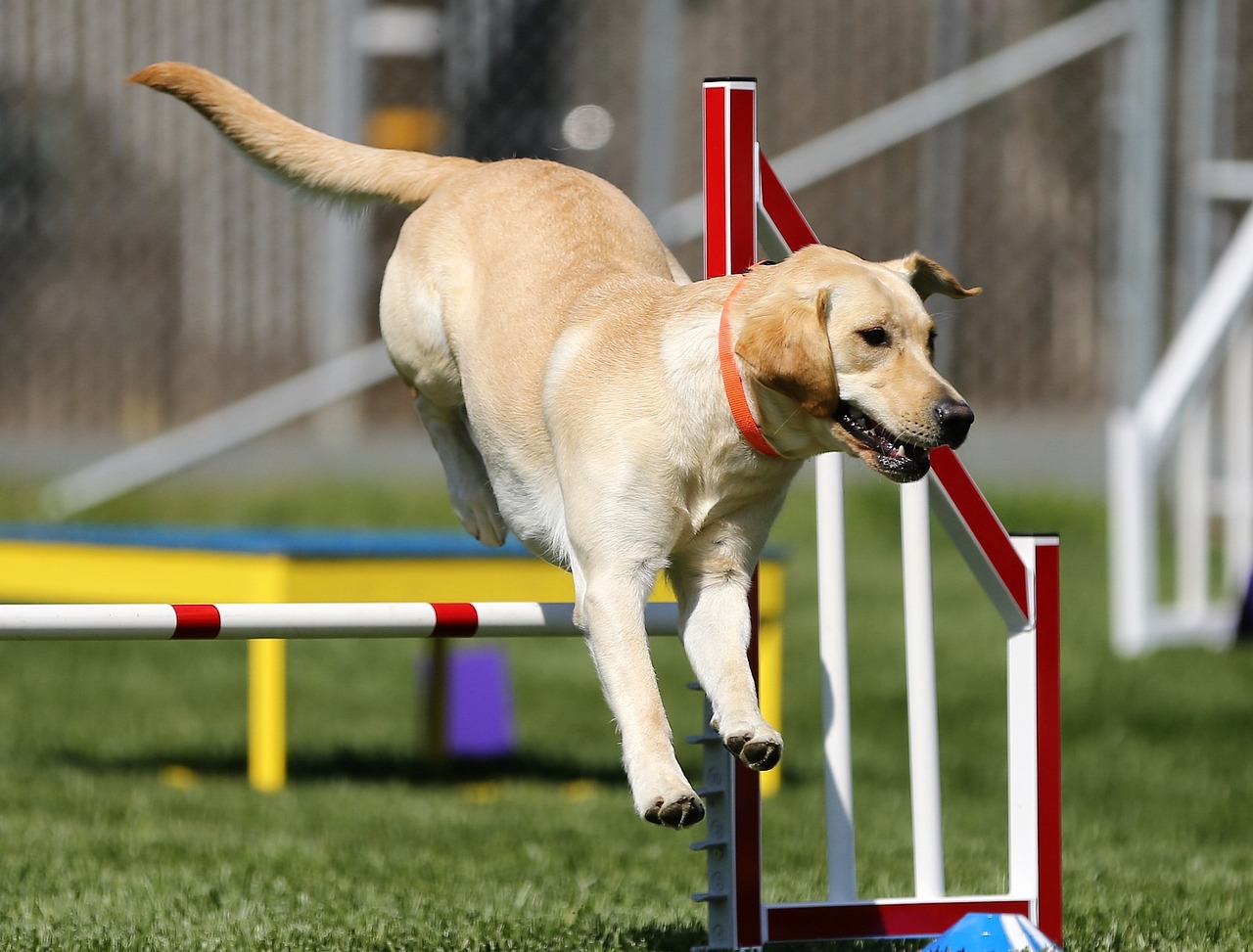
Basic Commands for Agility
Before diving headfirst into the exciting world of agility training, it's crucial to establish a solid foundation with your furry companion. Think of it like building a house; without a strong base, everything else can come crashing down. The basic commands are the building blocks of agility training, setting the stage for your dog to learn more complex maneuvers and navigate obstacles with confidence. The three essential commands you should focus on are sit, stay, and come.
The sit command is often the first trick many dog owners teach their pets. It’s simple yet effective. When your dog sits, it not only shows that they are attentive but also helps them calm down, making it easier for them to focus on what’s next. You can teach this command by holding a treat above your dog's nose and moving it back over their head. As they follow the treat with their eyes, their bottom will naturally lower to the ground. Remember to reward them with praise and the treat once they sit!
Next up is the stay command. This command is vital in agility training because it teaches your dog to remain in place until you give them the signal to move. To train your dog to stay, start by having them sit, then take a few steps back while saying “stay.” If they remain in position, reward them with a treat. If they get up, gently guide them back to the starting position and try again. Consistency is key here; practice this command in various environments to help your dog understand that “stay” means “stay” no matter where you are.
The come command is perhaps one of the most important commands your dog should master, not just for agility but for their safety as well. Teaching your dog to come when called can prevent them from running into dangerous situations. Start by using a long leash in a safe, enclosed area. Call your dog’s name followed by “come,” and gently pull on the leash if they hesitate. When they come to you, shower them with praise and a treat. This positive reinforcement will help them associate coming to you with good things.
As you progress with these commands, you can begin to incorporate them into agility training. For example, you might ask your dog to sit before they approach an obstacle, or to stay while you position yourself on the other side of a jump. This not only reinforces the commands but also builds your dog’s anticipation and excitement for what’s to come.
In addition to these basic commands, it’s beneficial to introduce some agility-specific cues that will help your dog understand what you want them to do during training sessions. For instance, teaching them to recognize the word “jump” when approaching a jump or “weave” when navigating through weave poles can enhance their performance and streamline the training process. Remember, the key is to keep training sessions fun and engaging, so your dog remains motivated and eager to learn.
In summary, mastering these basic commands is essential for a successful agility training journey. They not only serve as the groundwork for more advanced skills but also strengthen the bond between you and your dog. As you practice these commands, you’ll notice your dog becoming more responsive and confident, ready to tackle the thrilling challenges of agility courses!
- How long does it take to train my dog on basic commands? The time it takes varies by dog, but with consistency and patience, you can see progress within a few weeks.
- Can any dog participate in agility training? Yes! Most dogs can participate in agility training, but it's important to consider their physical abilities and temperament.
- What if my dog doesn’t respond to commands? If your dog struggles, try using higher-value treats or breaking down the commands into smaller steps to make them easier to understand.

Building Confidence in Your Dog
Building confidence in your dog is a crucial aspect of agility training. Just like humans, dogs can feel anxious or unsure when faced with new challenges. Imagine your dog stepping up to an obstacle for the first time; if they’re nervous, they might hesitate or refuse to try. This is where your role as a trainer becomes vital. By employing positive reinforcement techniques and creating a supportive environment, you can help your furry friend embrace agility training with enthusiasm.
One of the most effective methods for building confidence is through positive reinforcement. This means rewarding your dog with treats, praise, or playtime whenever they successfully navigate an obstacle or even just approach it. For example, if your dog sniffs the jump bar, give them a treat! This encourages them to associate the obstacle with something positive. Over time, your dog will learn that trying new things leads to rewards, boosting their confidence and willingness to tackle more challenging tasks.
Another important technique is gradual exposure. Start with basic obstacles that are easy for your dog to manage. For instance, if you're introducing a tunnel, begin with a short, open-ended one. Allow your dog to explore it at their own pace. You might even sit at the other end, calling them to you. This not only makes the experience less intimidating but also reinforces their trust in you. As your dog becomes more comfortable, gradually increase the difficulty of the obstacles. This method ensures that they build confidence step by step rather than feeling overwhelmed.
Creating a supportive training environment is equally important. This means training in a quiet area free from distractions, especially in the early stages. You want your dog to focus solely on the task at hand without the stress of loud noises or other animals. Additionally, be patient and understanding. If your dog seems hesitant, take a step back and give them time. Sometimes, less is more! If they’re struggling with an obstacle, don’t force them. Instead, encourage them with gentle guidance and praise.
Incorporating play into your training sessions can also help build confidence. Dogs love to play, and incorporating games into agility training can make the experience enjoyable. For example, after a successful run through a series of obstacles, engage your dog in a game of fetch or tug-of-war. This not only reinforces their achievements but also creates a positive association with the training process itself.
Lastly, remember that every dog is unique. Some may take longer to build confidence than others, and that's perfectly okay. Celebrate the small victories, and don’t compare your dog’s progress to others. The goal is to create a happy, confident companion who enjoys the agility training experience. With time, patience, and the right techniques, you’ll see your dog blossom into a confident agility star!
- How long does it take to build confidence in my dog? Confidence-building varies by dog. Some may take weeks, while others might need months. Consistency and patience are key!
- What if my dog is still scared after several attempts? If your dog remains fearful, consider consulting a professional trainer who specializes in positive reinforcement techniques.
- Can I use treats for every obstacle? Initially, yes! As your dog gains confidence, you can gradually reduce the frequency of treats, replacing them with verbal praise.
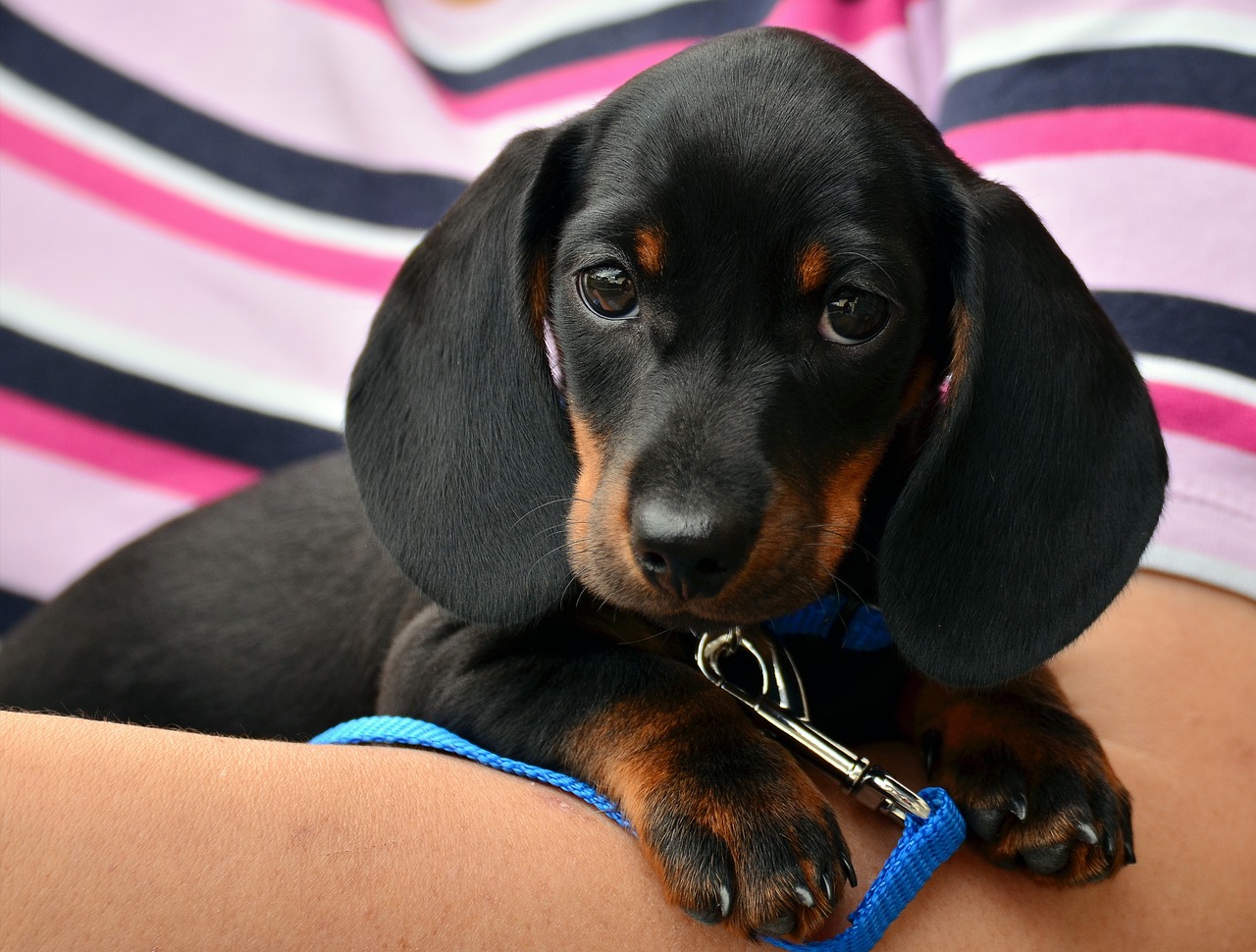
Introducing Obstacles Gradually
When it comes to agility training, introducing obstacles to your dog is like unveiling a treasure map—each obstacle is a new adventure waiting to be explored! However, diving headfirst into a complex course can be overwhelming for your furry friend. That's why it's essential to introduce obstacles gradually, allowing your dog to build confidence and familiarity with each new challenge they face.
Start with simple obstacles that are low to the ground, such as small jumps or tunnels. These initial steps are crucial because they help your dog learn the basic mechanics of agility without the intimidation factor of more complex equipment. Think of it like teaching a child to ride a bike; you wouldn’t start them off on a steep hill! Instead, you’d choose a flat surface where they can practice balance and steering before tackling more challenging terrains.
As your dog becomes comfortable with these beginner obstacles, you can slowly increase the difficulty level. For example, once they master a low jump, you might raise the height slightly or introduce a new element like a tunnel. This gradual exposure helps prevent fear and anxiety, ensuring that your dog remains excited about the training process. Remember, the goal is to create a positive experience that fosters trust between you and your dog.
Here are some tips for introducing obstacles gradually:
- Observe your dog’s body language: Pay attention to signs of hesitation or fear. If your dog seems unsure, take a step back and allow them to acclimate to the obstacle at their own pace.
- Use positive reinforcement: Reward your dog with treats or praise when they successfully navigate an obstacle. This will create a positive association with the new challenges.
- Keep sessions short and fun: Dogs have limited attention spans, so keep training sessions brief and engaging to maintain their enthusiasm.
By gradually introducing obstacles, you’re not just training your dog; you’re also building their confidence and strengthening your bond. Each small victory will encourage them to tackle the next challenge with gusto. Remember, agility training is as much about the journey as it is about the destination. Celebrate the small wins, and soon enough, you’ll both be navigating the agility course like pros!
Q: How long should I wait before introducing a new obstacle?
A: It varies by dog, but typically, waiting until your dog is comfortable with the current obstacle before introducing a new one is ideal. This could take a few sessions or even weeks.
Q: What if my dog shows fear of an obstacle?
A: If your dog shows fear, take a step back. Allow them to explore the obstacle at their own pace, and use treats or toys to encourage them to approach it without pressure.
Q: Can I train my dog alone, or should I seek professional help?
A: While many dog owners successfully train their pets at home, joining a class or working with a professional can provide valuable guidance and support, especially for agility training.

Practice Makes Perfect
When it comes to agility training, the age-old saying "practice makes perfect" couldn't be more accurate. Just like a musician needs to practice scales or an athlete drills their moves, your dog needs consistent training sessions to master agility skills. But what does this really mean in the context of agility? It means setting aside dedicated time each week to work on various skills, refining techniques, and building up to more complex obstacles. Think of it as a journey where each session is a stepping stone toward becoming an agility superstar!
But how do you ensure that your practice sessions are effective and engaging? First, consider the duration and frequency of your training. Short, focused sessions of about 15 to 30 minutes are often more productive than longer, drawn-out practices. This keeps your dog’s attention sharp and prevents them from becoming overwhelmed or bored. Aim for at least three to four practice sessions a week, gradually increasing the frequency as your dog becomes more comfortable and skilled. Consistency is key!
Another crucial aspect is setting clear goals. Just like you wouldn’t embark on a road trip without a map, you shouldn’t head into a training session without a plan. Start with simple objectives, such as successfully completing a jump or navigating through a tunnel. Once your dog masters these tasks, you can gradually increase the difficulty. Keep track of their progress in a training journal or a simple table:
| Date | Skill Practiced | Success Rate | Notes |
|---|---|---|---|
| 01/01/2023 | Jumping | 80% | Need to work on the approach. |
| 01/03/2023 | Tunnels | 90% | Great enthusiasm! |
Tracking your dog’s progress not only helps you see how far they’ve come, but it also keeps you motivated as you celebrate their achievements. Plus, it allows you to identify areas that may need more focus, ensuring that your training remains well-rounded and effective.
Lastly, don’t forget to incorporate fun into your practice sessions! Agility training should be a joyful experience for both you and your dog. Use toys, treats, and plenty of praise to keep your dog engaged and excited. Mix up the routine by introducing new obstacles or even creating mini-courses that challenge your dog’s skills. The more enjoyable the training, the more likely your dog will look forward to it!
In summary, remember that the path to agility mastery is paved with consistent practice, clear goals, and a splash of fun. By dedicating time to practice, tracking progress, and keeping the sessions lively, you and your furry companion will not only improve your agility skills but also strengthen the bond you share. So grab those treats and let the training begin!
- How often should I practice agility training with my dog? Aim for 3 to 4 sessions a week, with each session lasting 15 to 30 minutes.
- What should I do if my dog seems overwhelmed during practice? Take a step back, simplify the tasks, and ensure that training remains a positive experience.
- Can I train my dog for agility at home? Absolutely! You can create a DIY agility course using household items like chairs, broomsticks, and hula hoops.
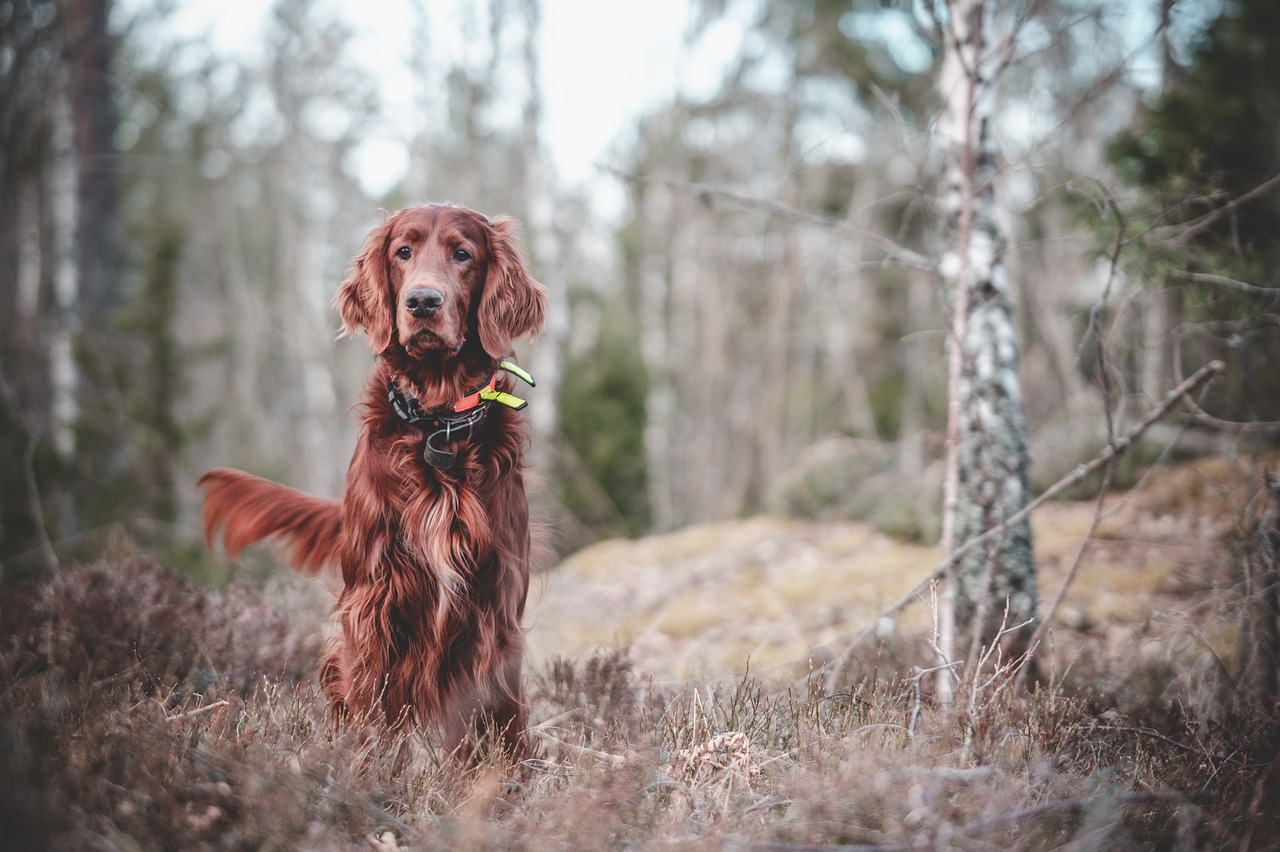
Common Challenges in Agility Training
Agility training can be an exhilarating journey for both you and your dog, but it's not without its hurdles. Many dog owners encounter common challenges that can make the process feel overwhelming. One of the biggest obstacles is the fear of obstacles. Imagine your dog staring at a jump as if it were a monster! This fear can stem from unfamiliarity with the equipment or past negative experiences. To combat this, it's crucial to introduce obstacles gradually and positively, allowing your dog to explore them at their own pace.
Another frequent challenge is lack of focus. Dogs, much like humans, can become distracted easily, especially in a bustling training environment. If your dog seems more interested in the squirrels outside than the tunnel in front of them, you might need to reevaluate your training space. A quiet, familiar area can help your dog concentrate better. Additionally, using high-value treats or their favorite toys as motivators can keep their attention on the task at hand.
Moreover, physical limitations can also pose a challenge. Some dogs may struggle with certain obstacles due to age, size, or health issues. It's essential to tailor your training to your dog's capabilities. For instance, if you have a small dog, you might want to adjust the height of jumps or choose softer surfaces to prevent injuries. Remember, agility training should be a fun and safe experience for your furry friend!
To help you navigate these challenges, here’s a quick table summarizing some common issues and their solutions:
| Challenge | Solution |
|---|---|
| Fear of Obstacles | Gradually introduce obstacles in a positive manner. |
| Lack of Focus | Train in a quiet space and use high-value rewards. |
| Physical Limitations | Adjust equipment to suit your dog's size and health. |
Lastly, it's important to remember that patience is key in agility training. Just like any skill, it takes time for your dog to learn and adapt. Celebrate small victories along the way, and don’t hesitate to seek advice from more experienced trainers or fellow dog owners. Training should be a bonding experience, and overcoming these challenges together will only strengthen your relationship!
Q: How long should I train my dog each day?
A: Ideally, training sessions should last about 10 to 15 minutes, focusing on quality over quantity. Frequent short sessions are more effective than infrequent long ones.
Q: What if my dog refuses to jump?
A: It's important to assess why your dog is hesitant. Start with lower jumps or use treats to encourage them. Building confidence is crucial!
Q: Can I train my dog for agility at home?
A: Absolutely! You can create a simple agility course in your backyard or living room using household items. Just ensure safety and fun!

Joining an Agility Class or Club
When it comes to agility training, joining an agility class or club can be a game-changer for both you and your dog. Imagine stepping into a vibrant community filled with fellow dog lovers, all eager to enhance their furry friends' skills while sharing tips and laughter. Not only does this provide a structured environment for training, but it also opens the door to invaluable socialization opportunities for your dog. Think of it as a playground where your pup can make new friends while honing their agility skills!
One of the biggest advantages of participating in an agility class is the access to expert guidance. Professional trainers bring a wealth of knowledge and experience, helping you navigate the intricacies of agility training. They can provide personalized feedback, ensuring that both you and your dog are on the right track. Additionally, these trainers often have a keen eye for spotting potential issues before they escalate, allowing for a smoother training experience.
Moreover, being part of a club fosters a sense of community. You’ll find yourself surrounded by like-minded individuals who share your passion for dogs and agility. This camaraderie can be incredibly motivating, pushing you to commit to regular training sessions and keep your dog engaged. Plus, attending classes can be a lot of fun! You’ll witness your dog’s progress alongside others, celebrating achievements together and sharing a few laughs over the inevitable mishaps that occur during training.
Another aspect to consider is the variety of training opportunities available through clubs. Many of them offer workshops, competitions, and social events that can further enhance your dog's agility skills. Participating in these activities not only improves your dog’s performance but also builds their confidence as they learn to navigate various obstacles in a supportive environment. In fact, many clubs host friendly competitions that can serve as a fantastic way to test your skills and bond with your dog.
So, how do you find the right agility class or club for you and your pup? Here are a few tips:
- Research local options: Look for clubs or classes in your area that specialize in agility training.
- Check reviews: Read testimonials from other dog owners to gauge the quality of the training provided.
- Visit before joining: Attend a class or event to see the environment and meet the trainers.
- Ask about their approach: Ensure their training methods align with your philosophy on dog training.
In conclusion, joining an agility class or club can provide numerous benefits that go beyond just training. It creates an enriching environment where both you and your dog can thrive, learn, and connect with others who share your enthusiasm for agility. So why wait? Dive into the exhilarating world of agility training and watch your dog flourish!
Q: What should I bring to my first agility class?
A: Bring your dog’s favorite treats, a leash, and plenty of enthusiasm! It's also a good idea to have water for both you and your dog.
Q: How long will it take for my dog to learn agility skills?
A: The timeline varies by dog. Some may pick up skills quickly, while others might take a bit longer. Consistent practice is key!
Q: Can any dog participate in agility training?
A: Yes! Most dogs can participate, but it's important to consider your dog's physical condition and temperament. Consult with a trainer if you're unsure.
Q: What if my dog is shy or fearful?
A: Many clubs offer beginner classes specifically designed to help shy or fearful dogs build confidence in a supportive environment.
Frequently Asked Questions
- What is agility training for dogs?
Agility training is a fun and engaging way to teach your dog to navigate through various obstacles like jumps, tunnels, and weave poles. It not only enhances your dog's physical fitness but also improves their mental stimulation and behavior.
- What equipment do I need for agility training?
You'll need basic agility equipment such as jumps, tunnels, and weave poles. It's essential to choose equipment that suits your dog's size and skill level to ensure a safe and enjoyable training experience.
- What basic commands should my dog know before starting agility training?
Before diving into agility training, your dog should master basic commands like sit, stay, and come. These commands form the foundation for more advanced agility skills and help create a strong communication bond between you and your dog.
- How can I build my dog's confidence for agility training?
Building confidence in your dog involves using positive reinforcement, gradually exposing them to obstacles, and creating a supportive training environment. Celebrate small victories to boost their self-esteem!
- How should I introduce agility obstacles to my dog?
Introduce obstacles gradually to prevent fear. Start with simple obstacles and allow your dog to explore them at their own pace. Use treats and encouragement to make the experience enjoyable and rewarding.
- How often should I practice agility training with my dog?
Consistency is key! Regular training sessions, ideally several times a week, will help develop your dog's agility skills. Set achievable goals and track their progress to keep them motivated and engaged.
- What are some common challenges in agility training?
Common challenges include lack of focus, fear of obstacles, and inconsistent performance. Identifying these issues early on allows you to implement strategies like positive reinforcement and gradual exposure to overcome them.
- Should I join an agility class or club?
Joining an agility class or club can be incredibly beneficial! It provides opportunities for socialization, expert guidance, and a supportive community, all of which can enhance your training experience and your dog's skills.











